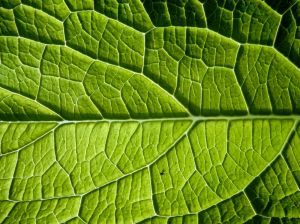Abstract
A cell membrane is made up of a phospholipid bilayer. The phospholipid bilayer is a very unique structure and serves as a very important asset to the cell. This structured complex shields the cell from any surrounding harm while also maintaining a steady fluctuation of nutrients and water into, and out of, the cell. The phospholipid bilayer is also penetrated by, and coated with a number of proteins. Some of these numerous proteins serve as “channels” to receive small molecules which cannot diffuse through the membrane into the cell. This allows the bilayer to absorb larger molecules, as well as, fluctuate to the surrounding pressures and inconsistencies of the surrounding environment. In order to fulfill its important role as the “shield” of the cell, the phospholipid bilayer must also have a “fluid-like” consistency. To help maintain this constant fluidity of the membrane, cholesterol is dispersed throughout the structure in key places. Some cells, like white blood cells, even specialize in engulfing other cells. This only made possible by the structure and function of the cell membrane. As well as its difficult task of protecting the cell, the phospholipid bilayer also consists of a number of other abilities.
Literature Review
The fluidity of the phospholipid bilayer is greatly due to its unique structure. Each phospholipid consists of a polar group head which is connected by a glycerol to two fatty acid chains. Sometimes the two fatty acid chains differ in that one is saturated and one in unsaturated, depending on the environment where the species is acclimated. . In the unsaturated fatty acid, a cis-bond is present creating a “kink” in the tail. This does not allow the phospholipids to pack to closely together when placed in a cold environment. Due to the polar head and the non-polar tails, a phospholipid is amphipathic (Childs 1998). Amphipathic means that some part of a molecule is hydrophilic and another part of the molecule is hydrophobic (1998). With a hydrophilic head and a hydrophobic tail, the phospholipid is “driven” to form a bilayer when immersed in water. This effect takes place due to the fact that water clings to the hydrophilic head and pushed the tails away due to the clinging effect. The bilayer is effective because it allows a “refuge” for the hydrophobic fatty acid tails in between the two rows of hydrophilic heads. To maintain this structure, the bilayer must stay in water. Due to the fact that the inner components of the bilayer are hydrophobic, the membrane is impermeable to most biological molecules and water-soluble molecules (Cooper 200).
The ability for the bilayer to continue working functionally is an amazing feat. For the phospholipid bilayer to do this, more phospholipids must be created and cholesterol must be present. In extremely cold temperatures, more unsaturated fatty acid tailed phospholipids are created to prevent the bilayer from losing its much needed fluidity (Skinner 2005).
Cholesterol can be found in the membranes of many eukaryotic life-forms. It is the most profuse neutral lipid in the plasma membrane of animals. Besides being needed for growth, cholesterol is also needed to maintain membrane fluidity (Yeagle 1988). Formed from a small polar head Beta-hydroxyl group bonded to a hydrophobic steroid nucleus with a hydrophobic hydrocarbon tail, cholesterol is polar (Stockton and Smith 1976). This makes the cholesterol amphipathic like the phospholipids. The way in which cholesterol keeps the fluidity of the membrane from becoming obstructed is by where it is located (Crocket t 1998). Due to cholesterol being amphipathic, it is located amongst the phospholipids in the sea-like bilayer. Here it can methodically “place” the phospholipids to increase functionality. The hydrocarbon tail is able to spin, which aids in keeping the proper fluidity of the membrane (Duax et al., 1988).
The fluidity talked about above allows the membrane to move and curve in the presence of tension. This bending and curving motion is called the curvature of the membrane. Plasma membranes have curvature due to constant changes of pressure from the environment, as well as changes inside the cell. By having the ability to “mold” to different types of strains, plasma membranes are able to stay intact and play their important roles in the cell (McMahon 2005).
While maintaining its important “fluid” state, plasma membranes are also semi-permeable. This means that most molecules cannot get through the membrane and into the cell. Water, oxygen, and carbon dioxide are some of the molecules which can diffuse through the membrane unassisted (Singer 1972). Diffusion is the concept of high concentration coming to a neutral concentration when mixed with a low concentration. An example of diffusion in most mammals occurs in the lungs. During the metabolizing of sugars, cells discrete carbon dioxide and use oxygen. This means that the carbon dioxide concentration in the cells is higher than the surroundings (1972). It also indicates that the concentration of oxygen inside the cell is at a low concentration. When the blood runs by the lungs, due to the concentration gradient, oxygen flows into the cells and carbon dioxide flows out of the cell. When water diffuses across the membrane, it is called osmosis. Osmosis is a good thing; however, it shows potential for causing problems. Water tends to flow toward a higher concentration of substance. This indicates that if a cell was placed in a solution that contained more substance than the inside of the cell, water would leave the cell shrinking it and possibly destroying it (1972). Or, on the other side of the picture, if a well was placed in a solution that contained a lower concentration of substance than the inside of the cell, the cell will gain water even to the point of exploding. In each of these situations the cells were respectively hypotonic and hypertonic to the solutions they were placed in.
Since the phospholipid bilayer is semi-permeable, it causes a problem because the cell has waste to get rid of and to get new nutrients in which it can digest. Without these important cycles happening the cell will die. The answer to this question lies on and in the membrane itself. Integral proteins appear to only sit on the surface of the plasma membrane. This was a common misconception made by scientists when first studying the plasma membrane. Through the freeze fracturing method of examining the cell membrane, scientists found that the proteins actually protruded throughout the entirety of the membrane (Childs 1998). Integral proteins, or transmembrane proteins, consist of hydrophobic and hydrophilic regions, making them amphipathic. This means that the hydrophobic regions are pushed and trapped in between the phospholipid bilayer alongside the fatty acid tails of the phospholipids, while the hydrophilic regions stick into the cell and our of the cell (Altenbach 1990). These proteins do not merely sit in this area without reason; they provide methods of transport for larger molecules which cannot diffuse through membrane across the phospholipid bilayer.
Integral proteins, or the proteins that protrude through the bilayer’s entirety, allow larger molecules a pathway into the cell. The three processes, in which this can occur aside from diffusion alone, are facilitated diffusion, primary active transport, and secondary active transport (Patlak 2000). Facilitated diffusion works much like diffusion alone. The protein acts as a channel and permits certain substances to “flux” from high to low concentrations, and vice versa. A unique aspect of facilitated diffusion is that it is only found in the cell membrane. Each protein can allow a range of certain different substances to diffuse through the membrane. This creates the concept of competition. Whichever substance gets to the protein first is allowed to diffuse through the membrane first (2000). Since the protein channel is only a certain size, it has a maximum amount of substance which can cross the membrane at one time. The transport maximum (tp) is the term commonly used to describe this “full” protein.
Primary active transport differs from that of either of the diffusions in that it requires some amount of energy to get the molecules across the membrane. Many scientists refer to active transport in proteins, as pumps. This gives the proteins that engaged in active transport the name “protein pumps”. Along with the diffusion of molecules, these “protein pumps” are also able to move ions across the membrane. One special, stand-out trait in which protein pumps are known for is the fact that they can move these molecules and ions up the concentration gradient. The most common example used when teaching about active transport is the synapse of a neuron (2000). Neurons are constantly kept at an uneven ionic concentration so that they are ready to “fire” at any needed give time. When a neuron is “fired” the sodium and potassium concentrations are forced to equalize out the uneven concentration. After the message is sent, the neuron needs to get back to its unequal ionic concentration. To do this, active transport is required. Adenosine tri-phosphate is used to activate a protein which then “pumps” the potassium and sodium back to their required places to allow the synapse to occur again when needed to (2000).
Secondary active transport is the third method of transport by proteins which molecules and ions to successfully penetrate the cell. Secondary active transport can consist of co-transport and counter-transport. In co-transport, the protein works very similar to a protein participating in facilitated diffusion. Co-transport allows the transport of two different molecules to move in the same direction down a concentration gradient at the same time (2000). This is a good method of transport to have when many molecules need to be moved at one time. Counter-transport, on the other hand, combines primary active transport and facilitated diffusion. Instead of using adenosine tri-phosphate as a power source to move certain molecules up a concentration gradient, counter-transport uses the energy released from another molecule which is diffusing down the concentration gradient as a power source (2000). This allows the cell to conserve its adenosine tri-phosphate reserves and work less while getting the same amount of work done.
The semi-permeable phospholipid bilayer of the cell is also structurally adapted to engulf other cells. There are two different ways in which one cell can engulf another cell using its phospholipid bilayer; endocytosis and exocytosis (Singer 1972). Endocytosis can be carried out in two different manners. The cell can use endocytosis to engulf another cell or bacterium, as well as to bring in large food particles which are too big for proteins to handle. When endocytosis is used to engulf another cell, the cells membrane fuses with the attacking cells membrane and the contents are then “dumped” into the main functioning part of the cell (1972). The versatile phospholipid membrane has the unique property of maintaining its structure as well as coming apart and fusing with other phospholipid membranes. Another manner in which endocytosis is carried out pertains to the taking in of large food particles. To do this, the phospholipid bilayer “caves in” and makes a cavity. The food is trapped in the small cavity. The bilayer then splits and reconnects, reforming the cell membrane as well as forming another small phospholipid ring containing the food particle inside the cell membrane. One commonly known cell which uses endocytosis is a white blood cell. These cells engulf anything foreign and lead the body’s immune system. Overall, endocytosis is the process of the cell taking something outside the cell into the inside of the cell. Exocytosis is done in much of the same manner as endocytosis, but is involved with the secreting of waste and other un-needed material (1972). Normally, after endocytosis occurs, other organelles “purify” the inner phospholipid circle. This phospholipid circle is considered un-needed and should be discarded from the cell. To do this, the waste phospholipid circle rejoins with the outer cell membrane and then excavates the un-wanted waste out of the cell (1972). The cell has then successfully eliminated the waste. The waste membrane merely bonds with the original cell membrane and the cell keeps on working normal.
Future Directions
Cell membranes have been researched for a long time. Unknown areas of the phospholipid bilayer have been questioned and researched upon, almost to the extent of completely understanding this elaborate structure. However, new people with new ideas are always questioning “old men’s” work and making it better.
An aspect in cell membranes which could be further expounded upon is the influence of the fatty acid tails. Kinked, unsaturated fatty acid tails of the phospholipids which compose the phospholipid bilayer in cell membranes hold a special function. They do not allow the phospholipids to pack together easily when placed in a cold environment (Childs 1998). If research on this matter was to take place, scientists could figure out a way to influence the production of more unsaturated fatty acid tails in phospholipids. Theoretically, having more unsaturated fatty acid tails would allow the cell to get colder without completely shutting down and dying. This could mean the difference between life and death for some climbers or people lost in a cold region of the world. However, a problem with this idea is the fact that the more unsaturated fatty acids which are present leads to a more fluid bilayer and less structure (1998). Less structure could lead to numerous faults in the membrane. If some scientist’s or researchers were able to place more unsaturated fatty acids in the cell’s plasma membrane and keep the membrane in a stable state, this research could lead to new improvements in the biological future of mankind.
Some other areas of the cell membrane also hold curious questions which have not been answered. Proteins which surround the outside of the cell and help send messages to neighboring cells are known to play other roles as well (Ionization 2006). Scientists suspect that some of the integral proteins aid in the formations of the phospholipid bilayer. The only way to be sure of this new scientific hypothesis is to test it and try to understand the question more.
With regards to present research upon the cell’s plasma membrane, scientists have already done numerous experiments in all fields of study using plasma membranes. One of the main uses of manufactured membranes is the filtration of water. Scientists have created a man-made membrane which can filter water; much like a cell’s membrane allows only water to simply diffuse through it (Canning 1999). Some scientists also believe manufactured membranes my hold the key to cleaner automobiles and textiles in the future (DuPont 2006).
The current and future technologies of biologically influenced membranes hold amazing answers to scientific questions. From altering mammal’s membranes to survive at colder temperatures to scientifically manufacturing membrane-like structures, membranes will always intrigue the scientific community.
Works Cited
Altenbach, Christian, Thomas Marti, H. Gobind Khorana, and Wayne L. Hubbell. “Transmembrane protein structure: spin labeling of bacteriorhodopsin mutants.” Science 248.n4959 (June 1, 1990): 1088(5). Expanded Academic ASAP. Gale. Clemson University. 19 Nov. 2008
.
Canning, Kathie. Don’t get soaked: today’s water treatment technologies help plants minimize operation,…” 1999. All Business. 20 Nov. 2008 .
Childs, Gwen V. “Membrane Structure and Function.” Cell Biology Graduate Program. 1998. University of Texas Medical Branch. 18 Nov. 2008 .
Cooper, Geoffrey M. The Cell: A Molecular Approach. 2nd ed. Sunderland, MA: Geoffrey M. Cooper, 2000. Structure of the Plasma Membrane. 2000. National Center for Biotechnology Information. 18 Nov. 2008 .
Crockett, Elizabeth L. “Cholesterol function in plasma membranes from ectotherms: membrane-specific roles in adaptation to temperature.” American Zoologist 38.n2 (April 1998): 291(14). Expanded Academic ASAP. Gale. Clemson University. 18 Nov. 2008
.
Duax, W. L., Z. Wawrzak, J. F. Griffin, and C. Cheer. 1988. Sterol conformation and molecular properties. In P. L. Yeagle (ed.), Biology of cholesterol, pp. 1-18. CRC Press, Boca Raton.
DuPont Fuel Cells Introduces New Extended Life Membrane.” 16 Nov. 2006. DuPont. 20 Nov. 2008 .
Hurtley, Stella. “Into the membrane. (Biochemistry).” Science 295.5556 (Feb 1, 2002): 767(1). Expanded Academic ASAP. Gale. Clemson University. 18 Nov. 2008
.
Ionization behavior of oleic acid in phospholipid bilayer membranes. 2006. Japan Science and Technology Agency. 20 Nov. 2008 .
McMahon, Harvey T., and Jennifer L. Gallop. “Membrane curvature and mechanisms of dynamic cell membrane remodelling.” Nature 438.7068 (Dec 1, 2005): 590(7). Expanded Academic ASAP. Gale. Clemson University. 18 Nov. 2008
.
Patlak, Joe. “Membrane Transport.” Department of Physiology. 1 Nov. 2000. University of Vermont. 20 Nov. 2008 .
Singer, S. J., and Nicolson, G.L. 1972. The fluid mosaic model of the structure of cell membranes. Science 175, 720-731.
Skinner, D.Z., B.S. Bellinger, S. Halls, K.-H. Baek, K. Garland-Campbell, and W.F. Siems. “Phospholipid acyl chain and phospholipase dynamics during cold acclimation of winter wheat.” Crop Science 45.5 (Sept-Oct 2005): 1858(10). Expanded Academic ASAP. Gale. Clemson University. 18 Nov. 2008
.
Stockton, G. W. and I. C. P Smith. 1976. A deuterium nuclear magnetic resonance study of the condensing effects of cholesterol on egg phosphatidylcholine bilayer membranes. I. Perdeuterated fatty acid probes. Chem. Phys. Lipids 17:251-263.






